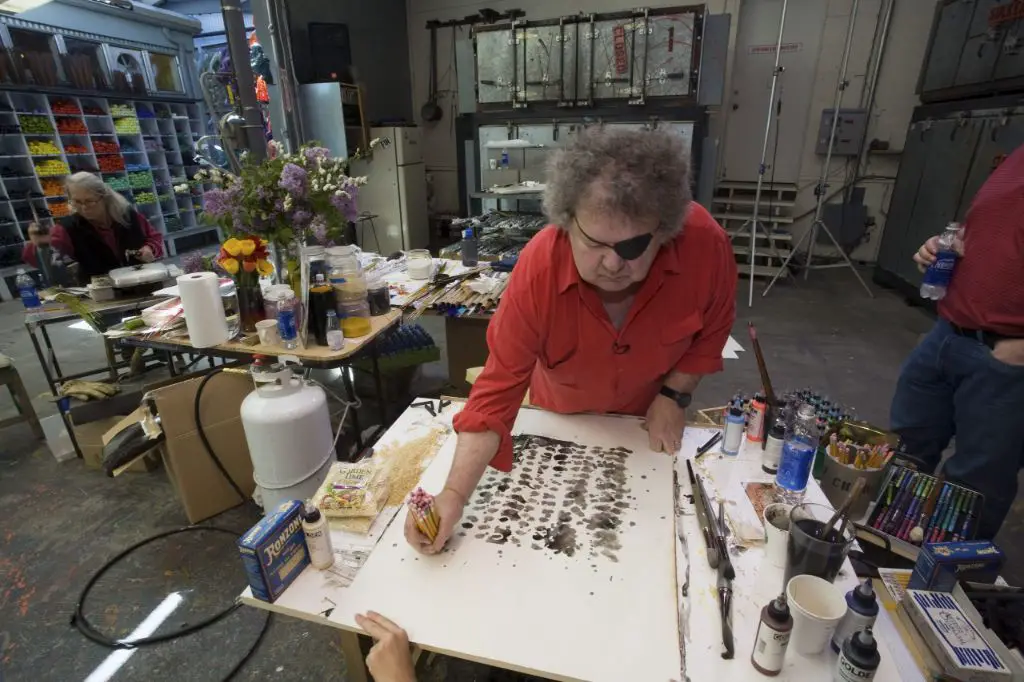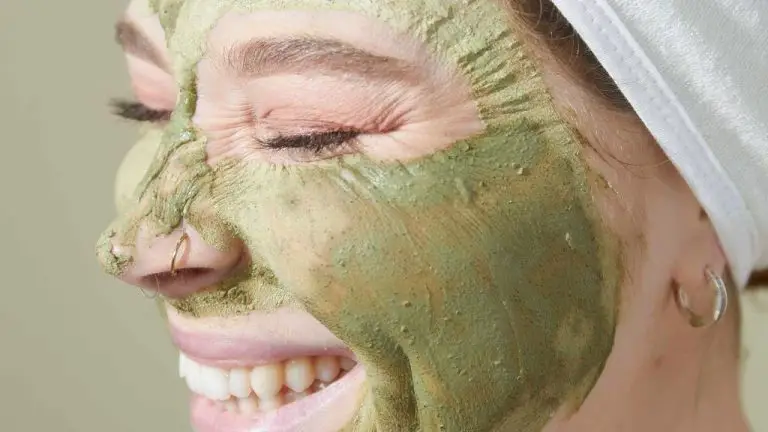What Happened To Dale Chihuly?
Dale Chihuly is an American glass sculptor who is renowned for his innovative work with blown glass. He is considered one of the most influential and successful contemporary glass artists. Chihuly pioneered the use of glass forms in large-scale installations and environmental works. His work is characterized by vibrant colors, bold forms, and dynamic compositions.
Over his long career, Chihuly has worked in series exploring different techniques and forms, including Seaforms, Ikebana, Macchia, Venetians, Persians, and Chandeliers. His artworks are included in over 200 museum collections around the world. Some of his most prominent large-scale public art installations include Chihuly Over Venice, Chihuly at Fairchild, and Chihuly Garden and Glass. Despite suffering injuries that prevented him from blowing glass himself, Chihuly continues to lead a collaborative team to create innovative glass artworks.
Early Life and Education
Dale Chihuly was born in Tacoma, Washington in 1941 to George and Viola Chihuly. His father was an organizer for the meat cutters union. (Dale Chihuly: The Artist’s Career)
As a young child, Chihuly was enthralled by the glassy doorknobs, chandeliers, and decorative pieces found in his aunt’s home. He started experimenting by melting light bulbs and molding the glass. At age eight, he got his first taste of glassblowing at a Union 76 gas station that had opened a glass blowing shop as a public relations scheme. Chihuly later remarked that at that moment, he knew he wanted to be a glassblower. (Chihuly: The Artist’s Career)
After graduating from Woodrow Wilson High School, Chihuly enrolled at the University of Washington in 1959. His initial areas of study were interior design and architecture. Two years later, he transferred into the art department to study under acclaimed ceramics professor and artist Robert Sperry. Chihuly received a bachelor of arts degree in 1965. He continued at the University of Washington, completing a master of science in sculpture in 1967. (Chihuly: The Artist’s Career)
Artistic Development
Chihuly’s early artistic inspirations included glassblowers in Venice as well as artists Alexander Calder and John Chamberlain. While studying interior design at the University of Washington in 1965, Chihuly was introduced to glass art by professor Harvey Littleton. This led Chihuly to pursue glassblowing, including studying at the Venini glass factory in Venice in 1968 (The UrbanGlass Art Quarterly).
After graduating with degrees in interior design and architecture, Chihuly received a scholarship in 1967 to attend the Rhode Island School of Design, where he later established the first glass program in the United States. There he experimented with melting glass in ovens and developed his signature techniques like combing and layering hot molten glass. Chihuly was also inspired by Native American art and basketweaving techniques during this time (The Martha Blog).
Notable Works
Dale Chihuly is renowned for his ambitious large-scale glass installations. Some of his most famous works include the Chihuly Garden and Glass exhibit in Seattle, the Glass Forest and Icicle Creek Chandelier at the Tacoma Museum of Glass, and Chihuly Over Venice project where he installed sculptures across Venice, Italy.
In 1995, Chihuly created an enormous 10,000 pound glass sculpture named the Sun for the opening of the Bellagio hotel in Las Vegas. Spanning 40 feet across, it features 2,000 hand-blown glass blossoms. Chihuly considers it one of his most ambitious works.
Another highlight was Chihuly Over Venice in 1996, where he scattered his vibrant glass pieces across the city. It included an installation on the Grand Canal featuring 15 Chandeliers and towers up to 25 feet tall. This was one of his first large-scale outdoor exhibitions.
In 2001, Chihuly exhibited at the Victoria & Albert Museum in London, becoming the first American artist with a solo show dedicated to his work. Over 15,000 visitors per day came to see his installations and it smashed attendance records for a temporary exhibit.
Chihuly has also exhibited internationally at renowned venues like the de Young Museum in San Francisco, Royal Botanic Gardens in London, and Museum of Fine Arts, Boston. He continues to have popular long-term exhibits such as at Chihuly Garden and Glass in Seattle.
Injuries and Health Issues
In 1976, while driving in England, Chihuly was severely injured in a head-on car accident. He was ejected through the windshield and suffered numerous injuries, including losing his left eye and sustaining significant damage to his face and torso (source). This accident changed the course of his art and career.
No longer able to blow glass himself, Chihuly assembled teams of expert glassblowers to realize his artistic visions. He took on more of an overseeing role, conceptualizing and directing projects while others did the physical labor (source). This workshop model allowed him to produce large-scale, prolific works at a rate that likely would have been impossible if he was blowing the glass himself.
In 1979, while recovering from a shoulder injury, Chihuly took a fall and dislocated his shoulder. No longer able to hold a glassblowing pipe, this cemented his shift to directing teams of artists. Chihuly embraced collaborating and said he could accomplish more than ever with the help of his team.
Workshop Approach
Chihuly is known for pioneering a workshop approach to glassblowing and art production. After his injuries, he could no longer blow glass himself, so he started hiring and training teams of expert glassblowers to carry out his artistic visions. He would provide sketches, drawings, and verbal instructions to communicate his ideas, while the team would produce the actual glass artworks under his direction.
Chihuly set up large-scale glass workshops, first in Rhode Island and later in Seattle. Dozens of assistants worked on different aspects of the pieces, from blowing and shaping the glass to adding color and assembling multipart installations. This was a novel way of working in the fine arts world that allowed Chihuly to take on more ambitious projects than any single artist could complete alone.
Chihuly has been credited with treating glassblowing more like an architectural or commercial endeavor than a fine arts craft. While some critics felt the workshop approach meant he was no longer the sole creator of his art, it allowed Chihuly to realize his creative visions at a larger scale.
Source: https://www.coa.edu/live/files/510-course-catalog
Later Career
In the 2000s and beyond, Chihuly continued to undertake ambitious large-scale projects and exhibitions around the world. Some highlights include:

In 2001, he exhibited at the Victoria and Albert Museum in London, featuring 15 chandeliers installed in the museum’s Rotunda.
In 2005, Chihuly returned to Venice and installed glass works at many historic sites for the exhibition Chihuly Over Venice. He also created a Glass Chandelier of Towering Fiori for the 2006 re-opening of the de Young Museum in San Francisco.
In 2010, Chihuly exhibited at Kew Gardens in London, featuring glasshouses and gardens with integrated glass sculptures. That same year, he also had a major exhibition at the Museum of Fine Arts, Boston.
Throughout the 2000s and 2010s, Chihuly continued touring exhibitions globally, including to Asia, the Middle East, and South America. Major museum retrospectives were held in cities like Montreal, San Antonio, and Denver.
Chihuly also realized more permanent large-scale installations during this period. This includes the Fiori at Bellagio in Las Vegas and the Chihuly Sanctuary at the Buffett Children’s Hospital in Omaha, Nebraska (source).
Legacy
Dale Chihuly’s impact on contemporary glass art has been immense. Over his long career he has pushed the boundaries of what can be done with glass, transforming it from a functional material to a respected fine art medium. Chihuly is credited with revolutionizing the Studio Glass movement by developing ambitious, large-scale installations and environmental sculptures that brought glass out of gallery spaces and into public view. Some of his most iconic works, like the Chihuly Garden and Glass at the Seattle Center, draw thousands of visitors and provide access to art for a wide audience. He also helped establish the Pilchuck Glass School, which has trained generations of glass artists. Chihuly’s innovations with using teams of skilled artisans, rather than working alone, allowed him to realize his grand artistic visions. His creative use of color and form has made his pieces instantly recognizable. Works by Chihuly can be found in over 200 museum collections around the world. Though he has not blown glass himself since a shoulder injury in 1979, Chihuly continues to lead his studio teams and develop new ambitious projects, ensuring his legacy for years to come.
Personal Life
Chihuly has been married twice. In 1987, he married Sylvia Peto but they divorced in 1991 after four years of marriage. Later in 2005, Chihuly married Leslie Jackson. Together they have a daughter named Lillian who was born in 2008 when Chihuly was 67 years old (Source 1).
Outside of his marriages, Chihuly faced several personal challenges. In 1976, while working in England, Chihuly was in a severe car accident that caused injuries including a brain concussion and a shattered shoulder. Later, in 1979, he lost his left eye in another car accident. After that, his depth perception was impacted. Despite this setback, Chihuly continued to blow glass and channeled his creativity in new ways like exploring lighting and environmental installations (Source 2).
In recent years, Chihuly has faced additional health struggles. He dislocated his shoulder in 2008 during a Bodysurfing accident. After multiple rotator cuff surgeries, he had to curtail his glassblowing activities. However, Chihuly found ways to continue creating art through his longtime workshop team approach (Source 3).
Current Status
Despite his advanced age and health issues, Dale Chihuly continues to be actively involved in creating new glass artwork and overseeing his global art empire. At 79 years old, Chihuly still leads design efforts and workshops at his Seattle studios (The News Tribune). He frequently travels for art exhibitions and installations, though his mobility is limited after numerous surgeries and injuries over the years. While he no longer blows glass himself, Chihuly directs his team of skilled artisans to bring his ideas to life. Major recent projects include Chihuly Garden and Glass in Seattle and a Chihuly Sanctuary at the Buffett Cancer Center in Omaha. He also continues developing his series of Niijima Floats inspired by Japanese fishing floats. Even as he enters his ninth decade, Chihuly’s creative vision shows no signs of slowing down.






